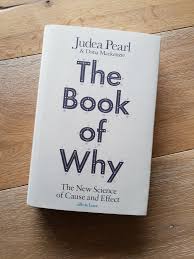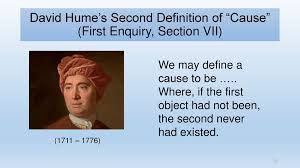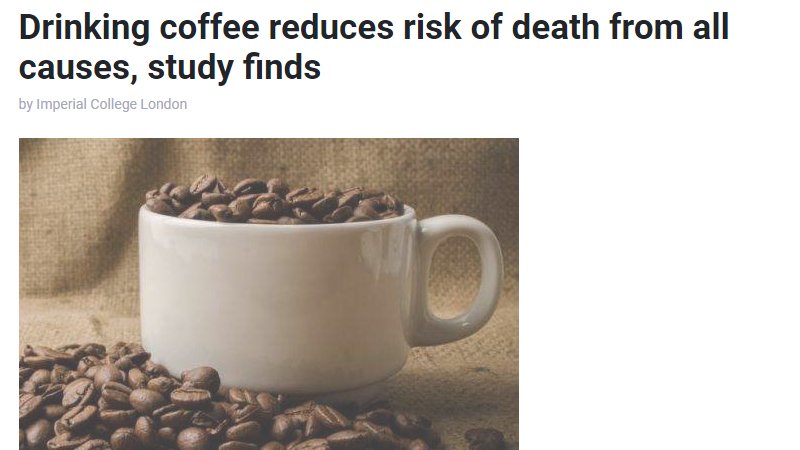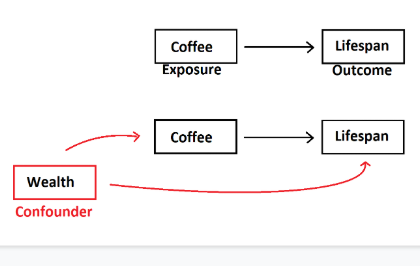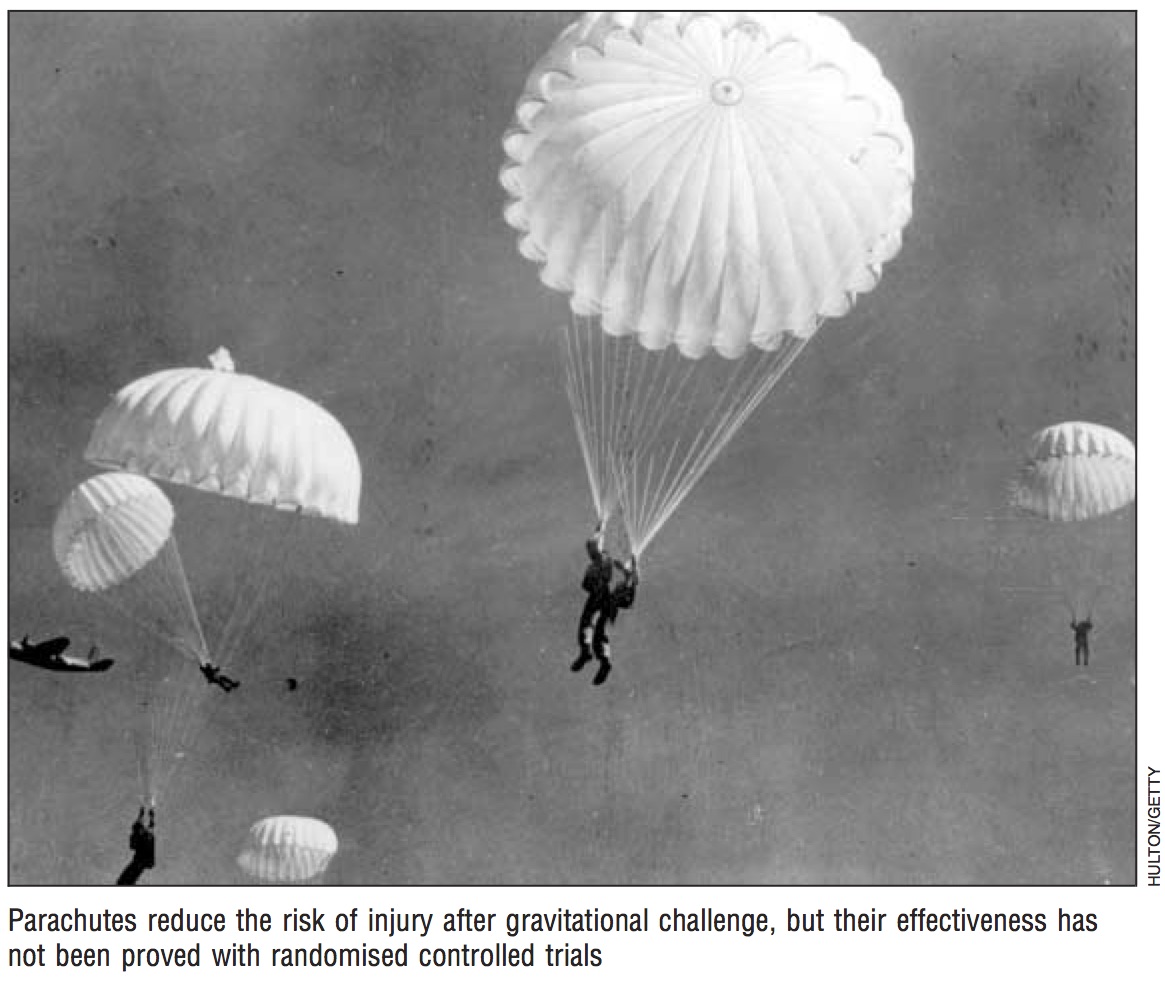1/ Tweetorial on Cause & Effect in Evidence Based Medicine
Alternatively: why we need to know the natural history of disease
Causal reasoning is a core part of the practice of medicine, but it is sometimes neglected in our EBM curriculum.
So here is a brief introduction!
Alternatively: why we need to know the natural history of disease
Causal reasoning is a core part of the practice of medicine, but it is sometimes neglected in our EBM curriculum.
So here is a brief introduction!
2/ The main references are wikipedia, and the Causal Inference Handbook by Hernan & Robins https://www.hsph.harvard.edu/miguel-hernan/causal-inference-book/">https://www.hsph.harvard.edu/miguel-he...
3/ The stud of cause & effect goes back to ancient philosophy. Their are many different models and approaches to the topic.
Here, we will focus on the framework from Judea Pearl that is used in epidemiology, economics, and many other fields.
Here, we will focus on the framework from Judea Pearl that is used in epidemiology, economics, and many other fields.
4/ We start a question:
What is the difference between a “causation” and “association”?
The main difference between causal inference and inference of association is that the causation analyzes the response to an outcome when the action is changed.
What is the difference between a “causation” and “association”?
The main difference between causal inference and inference of association is that the causation analyzes the response to an outcome when the action is changed.
5/ The two vignettes below illustrate how humans reason about causal effects.
By comparing different outcomes when the action is changed (i.e. transplant occurs vs withheld), we are able to make a causal inference.
(from Hernan & Robins)
By comparing different outcomes when the action is changed (i.e. transplant occurs vs withheld), we are able to make a causal inference.
(from Hernan & Robins)
6/ Causal reasoning:
We compare (usually only mentally) the outcomes when an action is taken vs withheld.
If the two outcomes differ, we say that the action has a causal effect (causative or preventive).
Otherwise, we say that the action has no causal effect.
We compare (usually only mentally) the outcomes when an action is taken vs withheld.
If the two outcomes differ, we say that the action has a causal effect (causative or preventive).
Otherwise, we say that the action has no causal effect.
7/ Side note: action can refer to a treatment, an intervention, or an exposure
Treatment ~ clinical therapy (abx for an infection)
Intervention ~ modification of non-disease factors or behavior (soda tax)
Exposure ~ any factor associated with an outcome (second hand smoke)
Treatment ~ clinical therapy (abx for an infection)
Intervention ~ modification of non-disease factors or behavior (soda tax)
Exposure ~ any factor associated with an outcome (second hand smoke)
8/ The approach to cause & effect by comparing potential outcomes from doing & not doing an intervention originates back to the philosopher David Hume.
The term used to describe this process is "Counterfactual thinking"
The term used to describe this process is "Counterfactual thinking"
9/ Pearl outlines a 3 level hierarchy to establish causation:
- We observe (Association)
- We act (Intervention)
- We compare 2 potential outcomes (Counterfactuals)
Counterfactual >> Act (do) >> Observe (see)
- We observe (Association)
- We act (Intervention)
- We compare 2 potential outcomes (Counterfactuals)
Counterfactual >> Act (do) >> Observe (see)
10/
- Observation is seeing an intervention & seeing the outcome. It is the weakest way to establish causation.
- Act is doing an intervention & seeing the outcome. It is stronger than observation.
- Counterfactual, as previously discussed, it the strongest way to causation.
- Observation is seeing an intervention & seeing the outcome. It is the weakest way to establish causation.
- Act is doing an intervention & seeing the outcome. It is stronger than observation.
- Counterfactual, as previously discussed, it the strongest way to causation.
11/ Their is, unfortunately, a dilemma:
Causal inference requires data for two potential outcomes, but in the real world, for each action we can only expect to have data for one outcome.
So what is the solution?
One answer is to conduct a randomized experiment!
Causal inference requires data for two potential outcomes, but in the real world, for each action we can only expect to have data for one outcome.
So what is the solution?
One answer is to conduct a randomized experiment!
12/ Randomized experiments let us put exchangeable individuals in 2 different groups, each receiving a different intervention, and then compare data for any difference in outcomes.
Its almost like a magic trick: RCTs lets us see the counter-factuals in large groups of people!
Its almost like a magic trick: RCTs lets us see the counter-factuals in large groups of people!
13/ One important aspect is the randomization, which removes any concern for *Confounders*.
What is a confounder? According toe Pearl, is the difference between "doing" and "seeing".
What is a confounder? According toe Pearl, is the difference between "doing" and "seeing".
14/ Confounder:
Let us consider the effects of coffee on lifespan. We observe coffee drinkers tend to live longer.
Now lets pretend we do a study giving coffee to people, and it doesnt increase their lifespan.
How do we explain this difference in outcomes?
Let us consider the effects of coffee on lifespan. We observe coffee drinkers tend to live longer.
Now lets pretend we do a study giving coffee to people, and it doesnt increase their lifespan.
How do we explain this difference in outcomes?
15/ The difference in outcomes between the observation and the intervention is the confounder.
Here, the confounder is wealth. Wealthy people can afford more coffee, and their wealth helps them live longer.
Coffee itself has no causal effect on lifespan.
Here, the confounder is wealth. Wealthy people can afford more coffee, and their wealth helps them live longer.
Coffee itself has no causal effect on lifespan.
16/ The picture is one way to graphically show cause & effect. The confounder "wealth" has 2 arrows effecting both the exposure (coffee) and outcome (lifespan).
Because randomization eliminates confounders, is the "medical gold standard" for establishing causation.
Because randomization eliminates confounders, is the "medical gold standard" for establishing causation.
17/ How worried should we be about confounders? Does every proof for cause and effect require evidence from an RCT?
In real life, the answer is obviously no! We can determine cause and effect quite easily just by imagining potential outcomes.
In real life, the answer is obviously no! We can determine cause and effect quite easily just by imagining potential outcomes.
18/ But in medicine, human biology is complex. Our ability to accurately predict and imagine potential outcomes is limited.
If we cant predict how drug X will work, then we should require an RCT.
If we can predict the effects of a seizure on driving, then we dont need an RCT.
If we cant predict how drug X will work, then we should require an RCT.
If we can predict the effects of a seizure on driving, then we dont need an RCT.
19/ In fact, one of the most important skills in medicine is the ability to understand and predict the natural history of a disease.
This clinical skill is essentially a process of improving our causal inference, by allowing us to predict potential disease outcomes!
This clinical skill is essentially a process of improving our causal inference, by allowing us to predict potential disease outcomes!
20/ But humility is important. The reality of modern medicine is that few interventions have sufficiently transparent mechanisms of action to allow us to comfortably predict potential outcomes.
Such "Parachute" interventions are unfortunately uncommon.
Such "Parachute" interventions are unfortunately uncommon.
21/ But uncommon is not "never"!
A case in point is this excellent article by @hildabast on hand washing and mask wearing.
Read through it, and ask yourself, how strong are the causal arguments and how much evidence do we need? https://www.wired.com/story/the-face-mask-debate-reveals-a-scientific-double-standard/">https://www.wired.com/story/the...
A case in point is this excellent article by @hildabast on hand washing and mask wearing.
Read through it, and ask yourself, how strong are the causal arguments and how much evidence do we need? https://www.wired.com/story/the-face-mask-debate-reveals-a-scientific-double-standard/">https://www.wired.com/story/the...
22/ EBM appropriately requires us to ask questions about the quality of evidence, the degree of bias, etc, etc.
Doing so within a framework causal inference shared by other fields will hopefully improve our skills at critical appraisal.
End.
Doing so within a framework causal inference shared by other fields will hopefully improve our skills at critical appraisal.
End.

 Read on Twitter
Read on Twitter